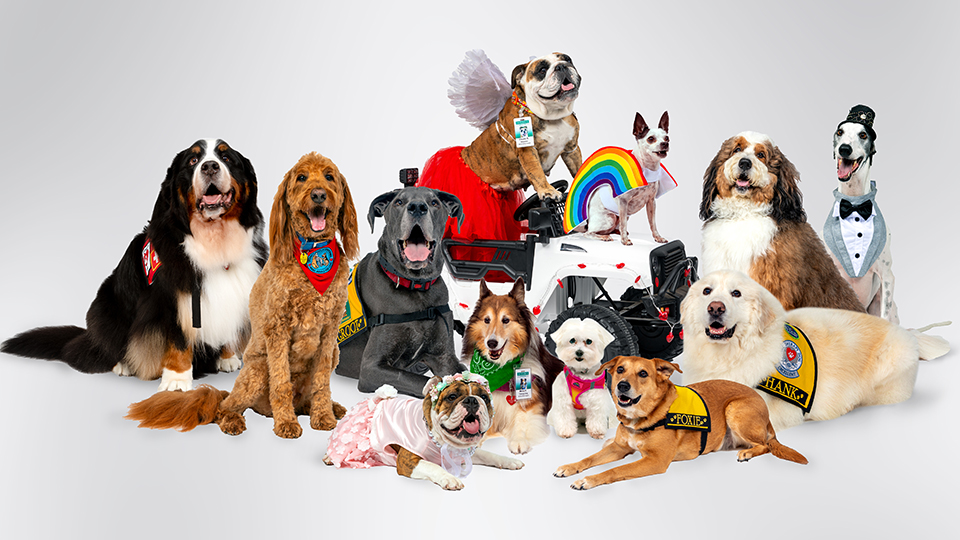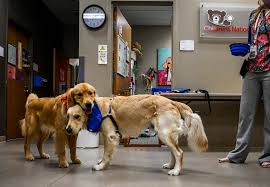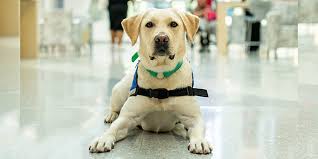Therapy Dogs: Furry Heroes Bringing Comfort and Healing to Children in Need
- ThaiDuong
- July 23, 2025

In the heart of every hospital, there are unsung heroes who bring comfort, joy, and healing to those who need it the most—children fighting through illness, enduring treatments, and facing the challenges that come with being in a hospital room instead of playing outside. But these heroes are not wearing capes. Instead, they have wagging tails, floppy ears, and the most loving eyes. They are therapy dogs.
Every day, a group of dedicated, four-legged companions wait eagerly for their shift to begin at a children’s hospital. Lined up in the corridors, their fur gleaming and tails wagging in anticipation, these dogs are not just waiting to be petted—they are there to provide something far more precious than any medicine can offer. They are there to offer emotional support, to bring a smile to the faces of children who may not feel like smiling, and to be the soothing presence that helps young patients face their toughest days with courage and calm.
Therapy dogs are specially trained to work in hospital settings, where their presence can make an enormous difference in the emotional and psychological well-being of patients. These dogs are not just adorable; they are skilled in providing comfort and support in ways that no human caregiver can quite replicate. The joy they bring is palpable—children who might feel scared, lonely, or anxious about their medical treatments are often able to relax and find peace in the simple act of petting a dog. The bond they share with their furry companions allows them to escape, even if just for a few moments, from the sterile and intimidating environment of the hospital.
For children undergoing long treatments or facing surgeries, the anxiety and fear can sometimes feel overwhelming. But when a therapy dog walks into the room, something magical happens. The room brightens, the atmosphere lightens, and for a while, the children’s focus shifts from the pain or discomfort they may be experiencing to the warmth and love of the dog at their side. These moments of comfort are not just fleeting distractions—they help children cope with the emotional toll of illness and recovery, offering them a sense of calm and security in the midst of their battles.
The dogs are trained to interact in a way that is gentle, non-invasive, and attuned to the emotional state of the children they meet. Whether it’s a quiet, reassuring presence in the corner of the room or an active playmate who engages with the child in a game of fetch, the therapy dog knows exactly how to adapt to each child’s needs. For some, simply having a dog sit by their bed is enough to ease their anxiety. For others, the playful antics of the dog provide a moment of pure joy and laughter in an otherwise challenging day.
The benefits of therapy dogs go beyond providing momentary comfort. Studies have shown that interactions with therapy dogs can lower blood pressure, reduce levels of anxiety and depression, and even boost the immune system. The mere act of petting a dog can trigger the release of endorphins, the body’s natural “feel-good” hormones, creating a sense of well-being and emotional healing. For children who are often unable to leave their hospital beds, the chance to bond with a dog brings a sense of normalcy back into their lives.
The effect is just as powerful on the parents and hospital staff. Witnessing the joy a therapy dog brings to their child can be incredibly emotional for parents, as they see their little one smile and laugh after days or weeks of feeling ill or distressed. Hospital staff, too, find the dogs to be a source of comfort and relief. The pressure and stress of caring for critically ill patients can weigh heavily on doctors, nurses, and medical teams. Seeing the positive impact therapy dogs have on the children often lifts their spirits and reminds them of the profound difference they’re making in the lives of their young patients.
But the dogs don’t just offer comfort during difficult moments. They are often a source of joy during playtime or a much-needed distraction from the monotony of hospital life. For children who are isolated in their rooms, awaiting treatments or tests, therapy dogs become a bridge to the outside world. They offer companionship, help alleviate loneliness, and provide a reason to look forward to something positive in their day. For the children who are physically able, a game of fetch, a short walk in the hallway, or simply lying on the floor with a dog can make all the difference in their mood and outlook.
These therapy dogs are not just pets; they are crucial members of the hospital team, offering emotional support and healing to those who need it most. Their presence is a reminder that sometimes, the best medicine doesn’t come from a pill bottle or a doctor’s prescription—it comes from the unconditional love and comfort of a dog. The wagging tail, the joyful bark, the gentle nudge of a nose, and the loving eyes that look into the heart of a child—these are the things that often make the most difference.
As the therapy dogs wait for their shifts to begin, lined up and ready to go, it’s clear that their work is far more than just being cute or cuddly. These dogs are bringing hope, joy, and healing to young patients who need it the most. They are proving, time and time again, that love and comfort come in all shapes and sizes, and sometimes, it’s wrapped in a furry coat and a wagging tail.
The work of these therapy dogs is a testament to the power of animals in healing, and their presence in children’s hospitals continues to make an incredible impact on the lives of young patients and their families. They are more than just companions—they are heroes in their own right, transforming the hospital environment into one of warmth, care, and unconditional love. In a place where fear, illness, and pain often reside, these furry heroes bring light, and remind everyone that no matter how tough the road may be, love and joy are always within reach. 🐾👶🏽❤️











